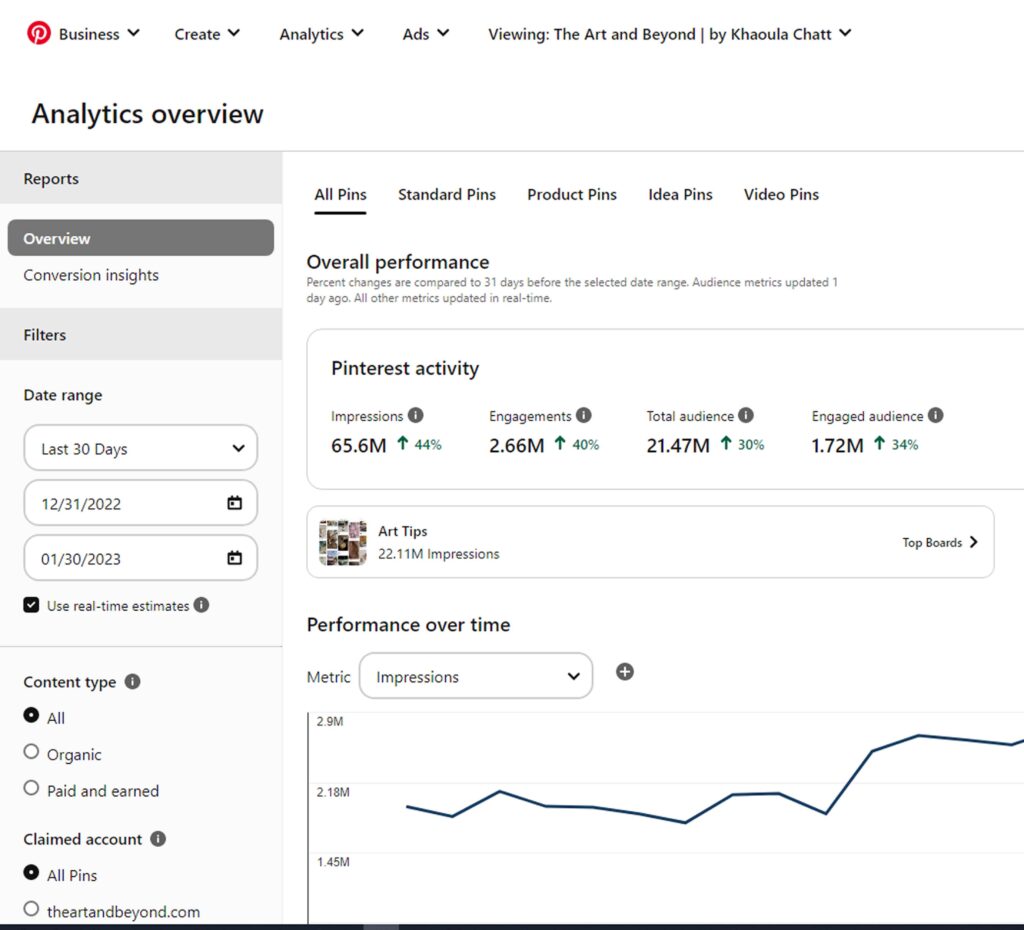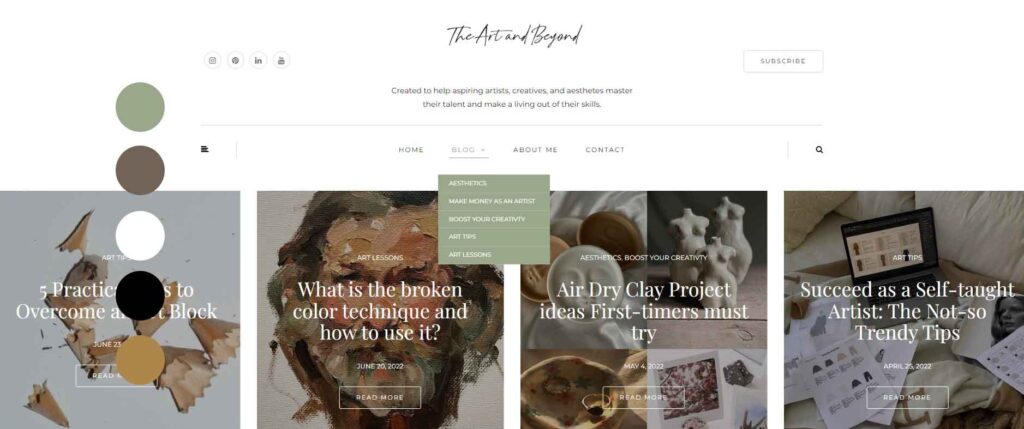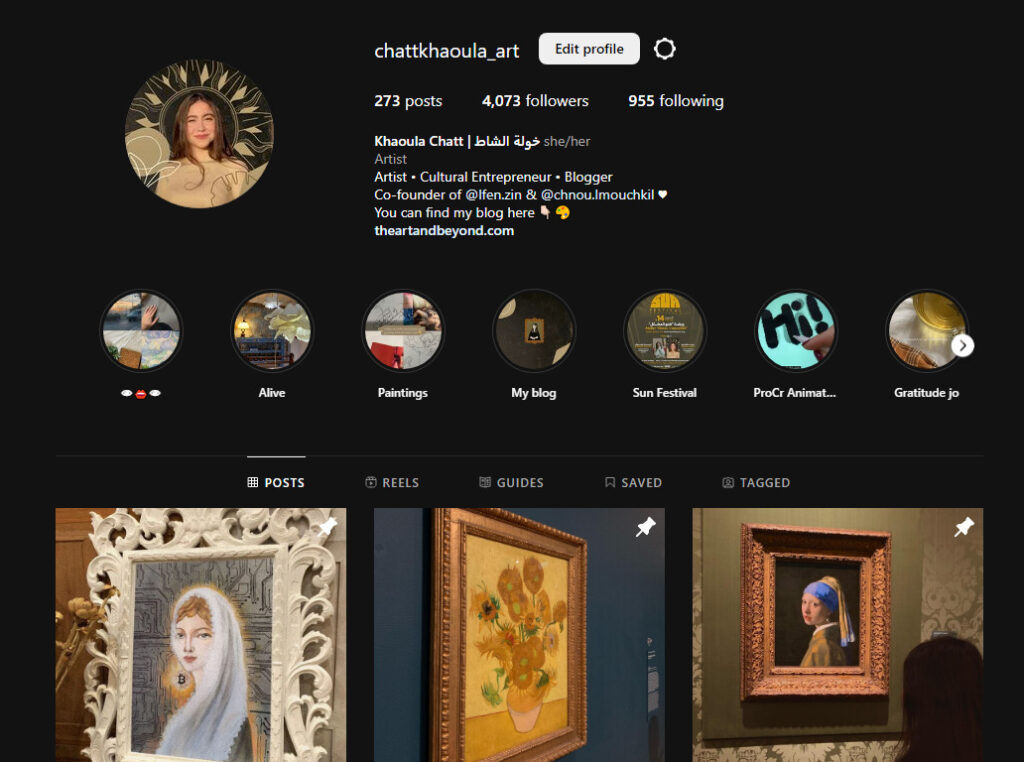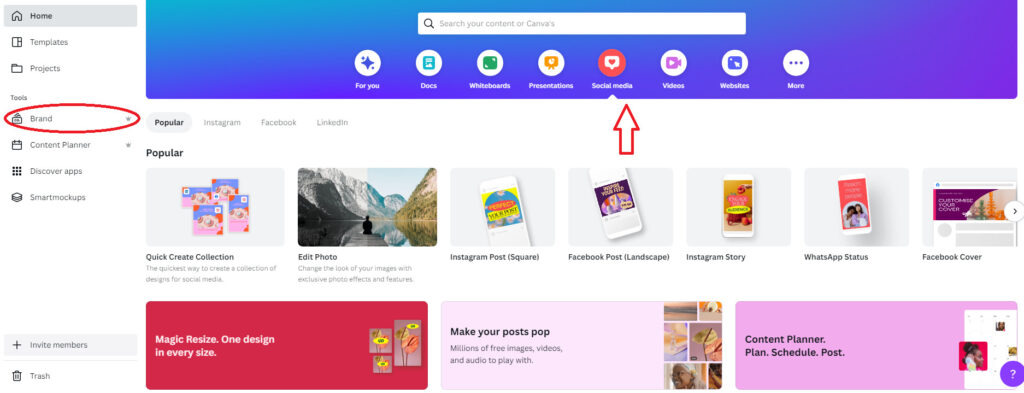Building a creative career is not an easy task but if I did it, you can do it too!
My name is Khaoula, and for the longest period of time, I thought my dream was to be an artist! But, through some soul-searching and self-examination, I realized that I did not want to stick to a title or a description, and I just have never looked back!
I am an entrepreneur, and in 2021, I founded The Art and Beyond. The thing that I like the most about what I do is having the freedom to do whatever I want. And also, to be able to engage with and cultivate creativity and a sense of community with people who share my interests and spirit.
After reading this article, I want you to be able to set some good goals for your online presence and get a sense of your brand and who you are. I will include some basic tools to help you reach your goals in the easiest way possible.
1- Think of yourself as a business
As an artist or a creative, you tell yourself that you create for the joy of it and that you’d rather identify as an artist instead of a business owner or an entrepreneur.
I want you to start with an immediate mindset shift, you are someone who creates for the joy of creating and pays your bills from your creative business and that makes you a business owner.
Here’s why:
If you are in the mindset of I’m “just” an artist or “It’s my side hustle”, things will be average for you. But here I want you to be amazing! I want you to be confident in your creative career and make as much money as you possibly can.
Stop being scared of how society judges artists when they become successful. You often hear that some artists’ work is too commercial or that they are only after money. But let me tell you, we’re all gonna die, so you choose if you want to live a successful life where you’re being judged or romanticize the idea of struggling starving artists.
Be ready to evolve and change, and start building a creative career!
2- Set your goals as a creative business owner
Here comes the importance of an online presence. All social media platforms come with analytics that helps you understand your growth and presence.
When I started building a creative career, my blog as part of it, I knew nothing about how to read or analyze analytics. Nowadays, I use these analytics to plan my content and to stay on track with what’s getting attention online and driving me traffic.
Why do I use analytics to set my goals?
A great goal is ambitious but realistic. I want you to aim super high but not too high that you discourage yourself from achieving anything.
I started both my blog and Pinterest account around the same time in 2021. After a year, these are my analytics for both, keeping in mind that I consistently post on both but the content for the blog is more organized and strategic while on Pinterest, I am focusing on quantity over quality.

Pinterest analytics:

If you take a look at both analytics compared, you can see that my Pinterest growth is skyrocketing compared to my google presence analytics. And that may not make sense since I drive traffic from my Pinterest to the blog. However, it’s much easier to grow on social media than on Google, because the algorithm isn’t the same.
That will make me set different goals for my blog and Pinterest!
I might be able to reach 100k followers on Pinterest for the upcoming month, but for my blog, 5k newsletter subscribers is a win.
Following my method, it’s your turn to start a website, track your analytics, and boost your online presence. Here’s how to do that.
3- Create a brand for your creative career
Read this article: Personal Branding for Artists: Create your own personal brand
The article above is an overview of how you can create a brand as an artist, and here I am willing to give you a look into the technical side of it.
Brand colors
This is a bit easier to start from since you can quickly identify the colors you like as an artist. They may be more present in your art, or colors you relate to. I am a huge fan of nudes and monochromatic palettes yet, I enjoy bold pops of color and dense patterns.
These colors represent you, your brand, and your full social media presence. So make sure you choose colors that you can use together and think about how you can use them.

I try to keep this palette consistent in my social media profiles as well.

Typography
Fonts really matter! Our human eyes and minds love consistency. And having a consistent typography separates you from others.
I use a simple handwriting font for my logo to keep it different from others.

And for the articles, I like to use a readable font that feels familiar so that my readers get the feeling that they have previously landed on my blog. This is just a personal preference. Make sure you do you always.

Typography doesn’t only depend on the fonts you’re using. It also depends on the composition you use to display your posts.
Download this workbook to learn more about your creative business
4- Building a website for your creative career
Homepage
When I was studying web development at uni. My professor used to say that you need to think of the homepage of any website as a magazine cover. Meaning, it should beautiful, it should give bite-size pieces of information about you and your business, have catchy taglines, be easy to navigate, and feel welcoming.
The tips I would give here are as follow:
- No pixelated images
- Captivating titles
- No typos
- Simple language
- A clear and short CTA (Join us, subscribe to our newsletter, get to know me…)
- Add the logos of collaborators
(This step is really important because when people see logos that they know and trust, they will get the impression that you are trustworthy and known and that makes your viewer form a positive mental image about you and your brand. So look at your press collaborations or other brands that you have worked with in the past and add them to your homepage. Moreover, you can focus on cultivating good relationships with known media platforms and other entrepreneurs).
The about page
Do as I say, not as I do! I suck at writing my own bios and about me pages. In fact, I have been trying to do it for a solid year to add it to this blog but I just can’t manage to find the right words.
Forget about me, though. This is about you, and you are a big part of your story and how you build your creative career. I encourage you to add an “about” page where you mention the following:
- Who you are?
- What do you do?
- Why do you do it?
- Why people should support you?
All you want here is to emotionally connect to your audience. Some storytelling will be really helpful.
This article might really come in handy for you: The IKIGAI concept: Figure out your passion
Contact page
Check out my contact page to get a general idea about creating your own.
All you need here is to define your targeted audience and tell people when and how they can reach out to you.
Add a contact form to make it easier for your audience to reach out to you. Feel free to also add social media platforms, an address, a mobile phone, and other contact details if you are a business occupying a location.
5- Using social media
I have previously published a post that includes many details about how you can use social media to build your creative career. Personal Branding for Artists: Create your own personal brand
Other tips that I would give you for using social media in your online business will be the following:
- Polished feeds, beautiful and engaging.
- Using consistent branding over and over again. (This is why we created a brand in part3)
- Algorithms love consistency (it’s alright to only post 3 times a week, but make sure you do that every week)
- Feel free to repost other people’s content but make sure you are giving credit where credit is due.
- Keep an eye on what people are loving in your niche
- Use social media templates
- Pre-plan your posts
Let’s talk about using social media templates
Canva is my holy grail. It makes social media so easy and stress-free. Open Canva, and take a look. Everything is there and at your disposal. You also have the option to add a “brand kit” so you can apply the same fonts and colors of your brand on every post and template you wanna use for your social media channels.

Pre-plan your social media posts
Just a simple table, excel sheet, or whatever else you prefer where you add your social media posts ideas, the pictures you want to post, the templates you designed previously, the captions you wanna add, etc. Make sure you keep adding your ideas to this table whenever you get them, but also block some time for this specific task weekly or monthly to plan your content so you’re not always under the pressure of creating content just because you feel like you have to.
Conclusion
Thank you for reading this article and I hope you will apply these tips and see results. Here are some resources that shall come in handy for you:
5 Free Art and Photograpghy Sources for Personal and Professional use
Enjoy creating <3



5 Comments